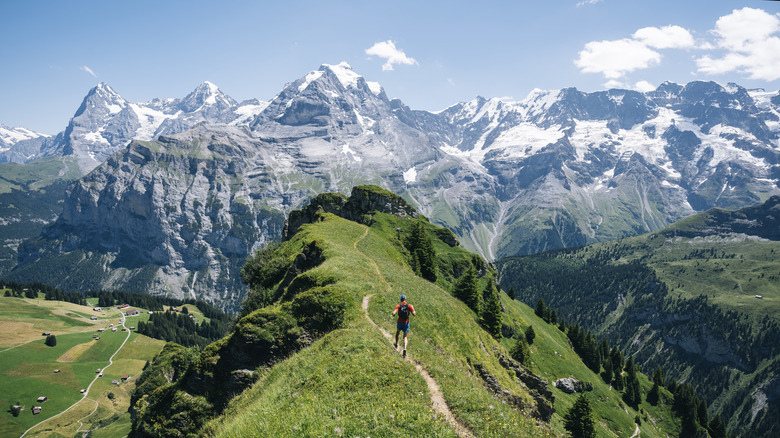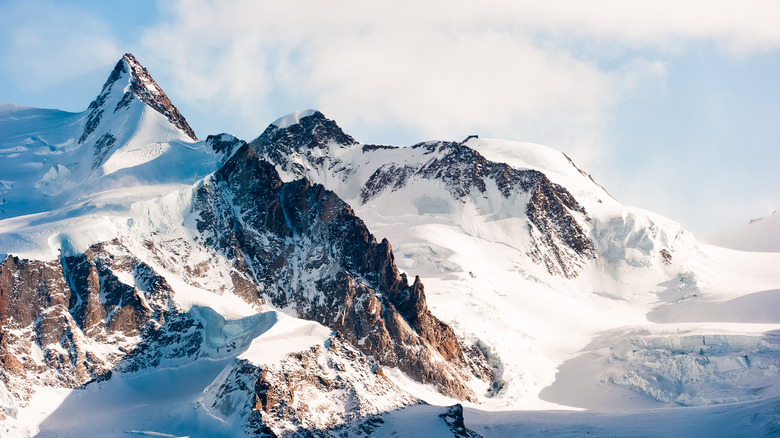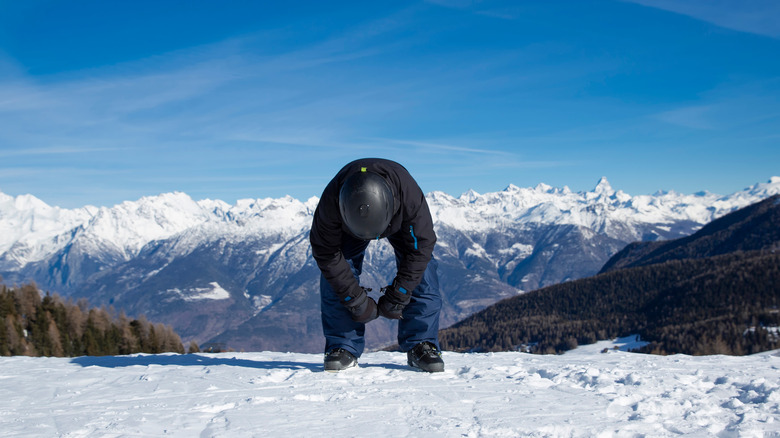The Dangerous Sickness Many Tourists Visiting Switzerland Underestimate
To blatantly state the obvious, the thing about the Swiss Alps is that they're pretty damn tall. That is a major part of the allure: Majestic snow-capped peaks that seem so remote and aloof from everyday life yet are relatively accessible to all-comers in the middle of Europe. Striding through an alpine glade and breathing pristine air evokes the romance, wonder, and adventure of the Golden Age of Mountaineering in the mid-18th century. This was when intrepid climbers chalked off the continent's unconquered summits — sometimes at a deadly cost. But the captivating height of the Alps also comes with a risk of something that many visitors underestimate: altitude sickness. In extreme cases, it can even become life-threatening.
The overall height of Switzerland catches many people unawares, especially if they are not used to such altitudes. Located on the mountainous backbone that stretches across central Europe from France to the heart of Austria, the country's average elevation is 4,429 feet above sea level. That makes Switzerland one of the highest nations on the planet. By contrast, the average elevation of the United States is around 2,500 feet, but significantly lower in many parts of the country. Travelers from Britain are even more likely to be taken aback; the United Kingdom is so low lying (531 feet) that it is impossible to get altitude sickness there. So what exactly is it, and how can you prevent it from ruining your trip, to say, this outdoorsy paradise devoid of tourist traps in Switzerland?
Symptoms of altitude sickness
Whatever your reason for visiting Switzerland, the Alps invariably provide the backdrop. The highlight for many outdoor types is exploring Switzerland's iconic Matterhorn in the far south, but the symbol of Swiss identity isn't the highest mountain in the country. That distinction goes to the Dufourspitze, which soars to a mighty 15,203 feet. In all, Switzerland is home to 48 peaks over 13,000 feet. This means that if you are planning an alpine vacation in the country, you will spend a lot of time at high altitudes.
This can present a problem as altitude sickness can start kicking in at around 8,000 feet. As we all know, the air gets thinner the higher you go, and the lack of oxygen can cause unpleasant symptoms, especially if you are ascending quickly. To put it simply, your body isn't getting enough oxygen to function properly. Typically, it takes up to 10 hours to have full effect, but it can cause headaches, nausea, tiredness, dizziness, and put you off food.
Resting at the same altitude for a day or two is usually enough to clear it up as your body adjusts, but more serious symptoms can develop. If you deteriorate and start encountering shortness of breath, confusion, poor balance, extreme drowsiness, or start hallucinating, it's time to get to lower ground. Other alarming indications that you need to reduce altitude are discolored skin and coughing up bloody saliva.
How to treat and prevent altitude sickness
The above symptoms are enough to put a dampener on a hike in the mountains, and it is important to know how to fight altitude sickness and not just try to soldier through. In a worst-case scenario, you could end up in a life-threatening situation. Both high altitude pulmonary edema (HAPE) and high altitude cerebral edema (HACE) can be fatal. A serious bout of the former can lead to swollen lungs and severe difficulty in breathing, while the latter may cause your brain to enlarge, possibly causing a coma or even death.
Treatment for mild cases of altitude sickness can be as simple as taking a few painkillers and resting or reducing your altitude until you have recovered. Heading down somewhere between 1,000 and 3,000 feet should improve your condition. In more serious situations, steroids may be administered along with an oxygen mask to help your lungs recover. If things get really bad, however, you might spend some time in a hyperbaric chamber, most commonly associated with divers recovering from the bends.
While altitude sickness can be treated, prevention is the best course of action. Flying directly into a high-altitude location is not a great idea if it can be avoided, and you should ascend in stages so you can adjust to lower oxygen levels before going any higher. Drink plenty of water to stay hydrated, avoid alcohol while on your hike, and don't keep pushing upwards if you start feeling bad.


